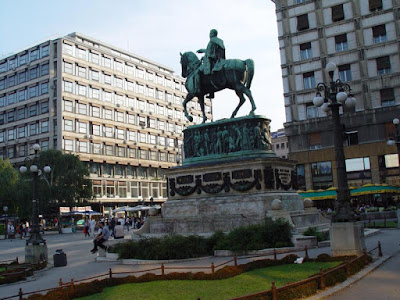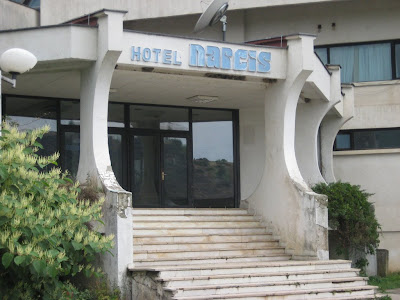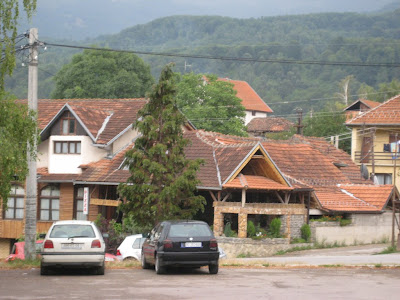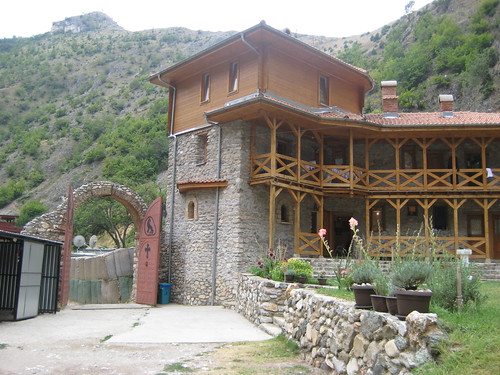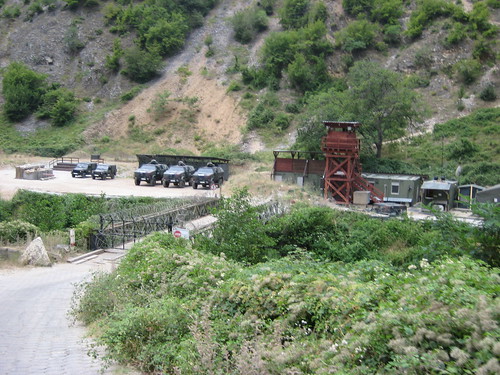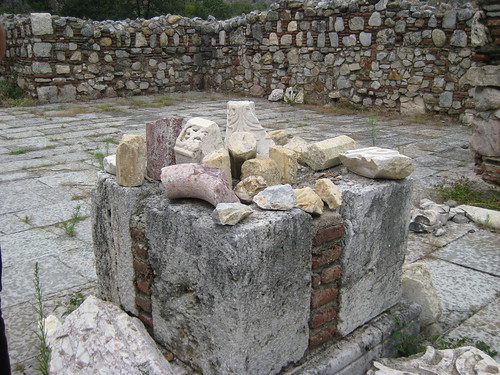This building is at the most famous shopping street in Belgrade...and chances are that you pass by without realizing what a special building it is. It sticks out more if you approach it from the Republic Square. The building is called "Dom stampe".
The «Dom stampe» building (the Presse Center Building) in Belgrade was erected in 1958-61. This modern business building was executed following the designs made by architect Ratomir Bogojević (1912–1963) one of the most prominent representatives of Serbian modern architecture, in the spirit of Le Corbusier.
At the time it was a novelty in the Belgrade setting. As a part of Trg Republike, this building plays a significant role since it completes a block whose highest point is the «Albanija» Palace (I made a post about it here).

The Press House is “designed and built in almost a classic manner, fits just right with the nearby Reunion Palace and the Foreign Trade Chamber buildings, and makes the ensemble of representative city palaces complete” at the Republic Square.
 Trg Republike 5 /corner of Kneza Mihailova
Trg Republike 5 /corner of Kneza Mihailova

